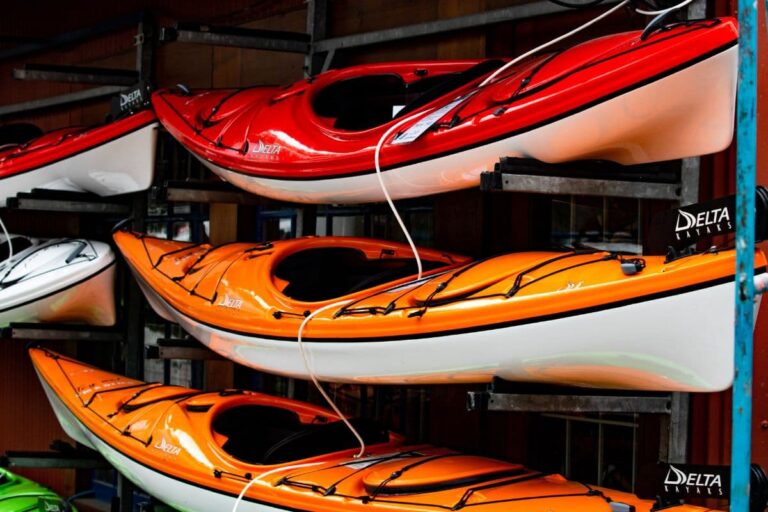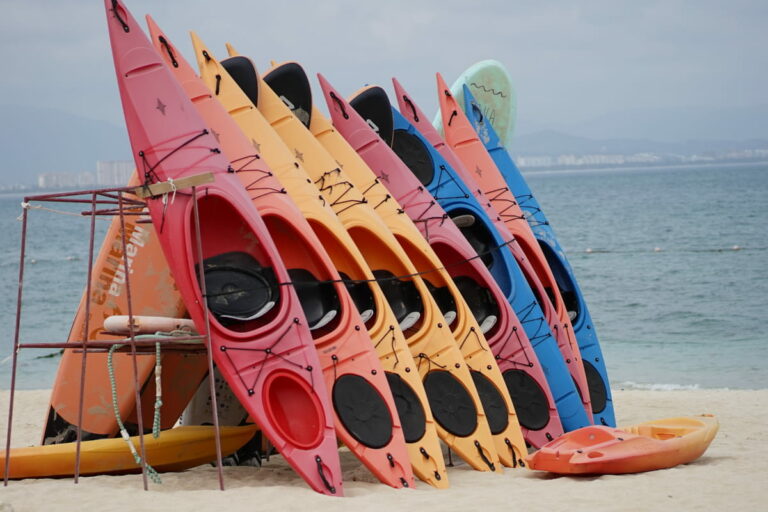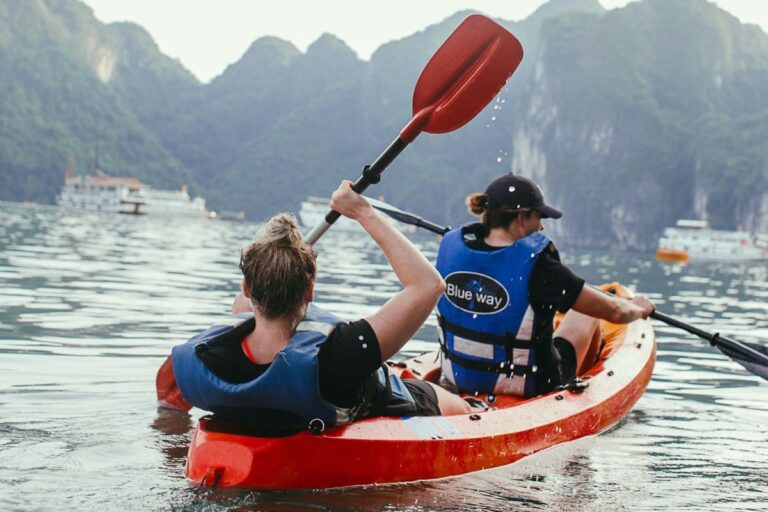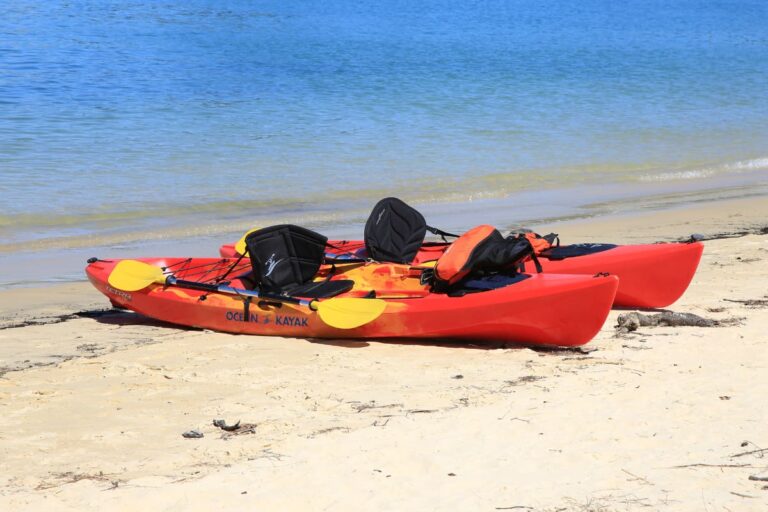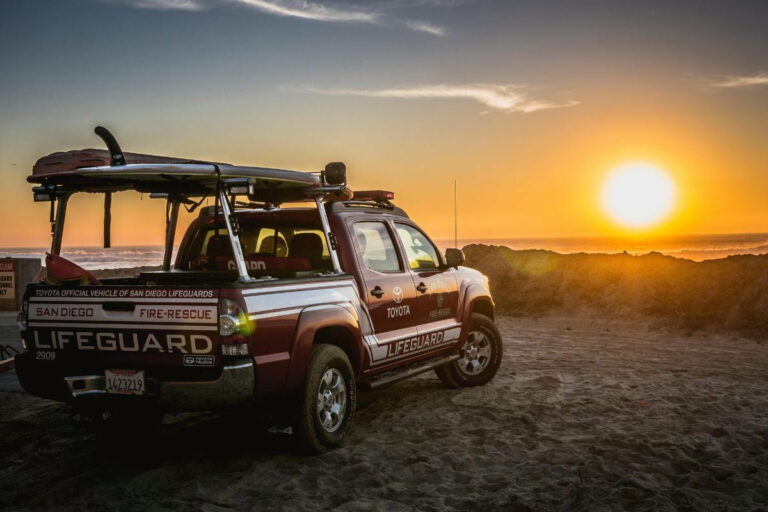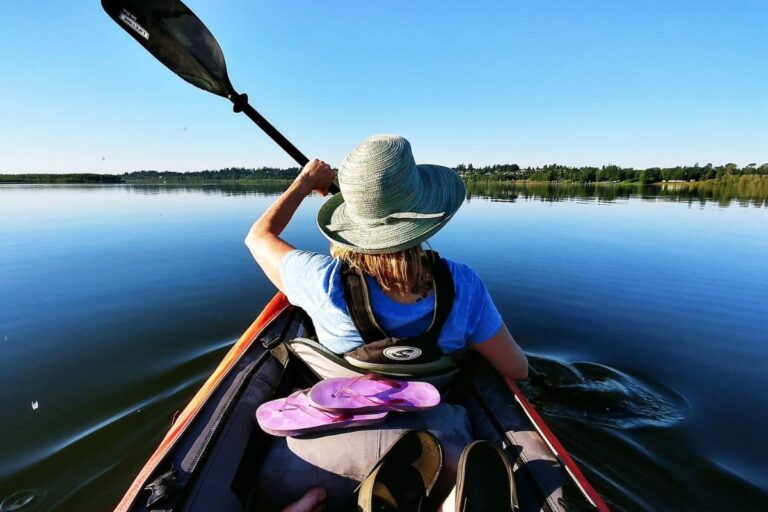What To Bring Along On A Kayaking Trip? (13 Must-Haves)
Kayaking is a fantastic way to get some exercise, be one with nature, and enjoy the peace and quiet.
Knowing what to bring on your kayaking trip can enhance your experience and also ensure that you stay dry!
When you’re new to kayaking, it may be challenging to figure out which gear you really need to bring, and those that are just nice to have.
The most obvious things you’ll need are a boat and a paddle.
But if you’re going camping, fishing, or on any other type of major kayaking adventure or extended trip, there are also a few additional items you’ll need.
The basics include a properly fitted personal flotation device (PFD), a whistle (or any other sound signal device), a white light, and a waterproof floating radio. You’ll also want to pack your various belongings (like food, water, clothing, sun protection, and First Aid kit) inside a dry bag.
Here are some important items you’ll want to include on your packing list in order to ensure that your kayaking trip is both safe and fun.
Kayaking Safety Essentials
A kayaking trip is meant to be a fun experience, but safety is key.
There are several items required by law that you must always have on-hand during any paddling trip or other risky outdoor activities.
A Properly Fitted Personal Flotation Device (PFD)
One of the most important pieces of safety gear you need is a properly fitted paddling PFD, or life jacket.
Ideally, you should have a PFD that’s pressure-activated, as opposed to the kind that is water-activated, which means it’s activated when water splashes on you.
Even if you are a strong swimmer, this will come in handy at times when you need to stay afloat.
Accidents happen, and weather conditions can change unexpectedly, so it’s better to be prepared for any unexpected circumstances.
A Whistle Or Any Other Sound Signal Device

It’s imperative to bring a whistle or other type of sound signal device on your kayaking trip.
If you should find yourself in danger and in need of assistance, the sound will help alert people to your location.
Make sure that your whistle works, both on the water and in the water.
Also, it’s important to keep your whistle physically on your body, and not packed away in a bag or somewhere else inside your kayak.
A White Light
You should always bring a white light with you, preferably one that can be seen from all 360 degrees around your boat, even if you plan to come back before dark.
Sometimes, you may lose track of time, and this light will come in handy.
A light will also help other boaters see you if you do plan to be out past dark.
There are many options to consider, but since you’re likely to get wet during your trip, a waterproof light is your best bet.
A Waterproof Floating Radio
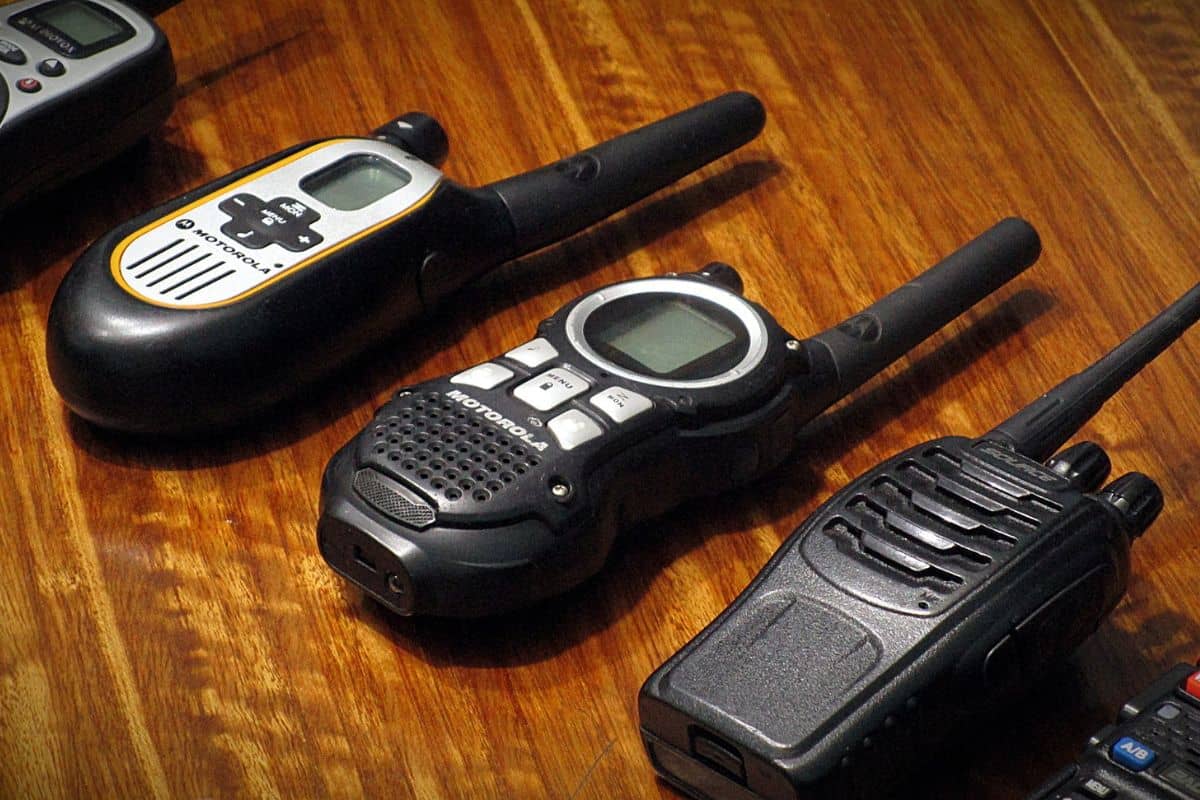
Even though you may have your cell phone with you, this is not always ideal since you could go out of range or your phone battery can die.
Bringing a floating radio is crucial, as it will not only give you access to weather alerts in your area, but it will also enable you to call for help in an emergency and alert the Coast Guard if needed.
A Waterproof Float Plan
If you are going kayaking alone, it’s always wise to have some form of waterproof float plan that includes your name, contact information, details about where you plan to go, as well as a map of your route clipped to your boat.
Share your float plan with someone who isn’t going with you so that if something goes wrong on your trip, you can be found more easily.
Pack Your Belongings Inside Waterproof Bags
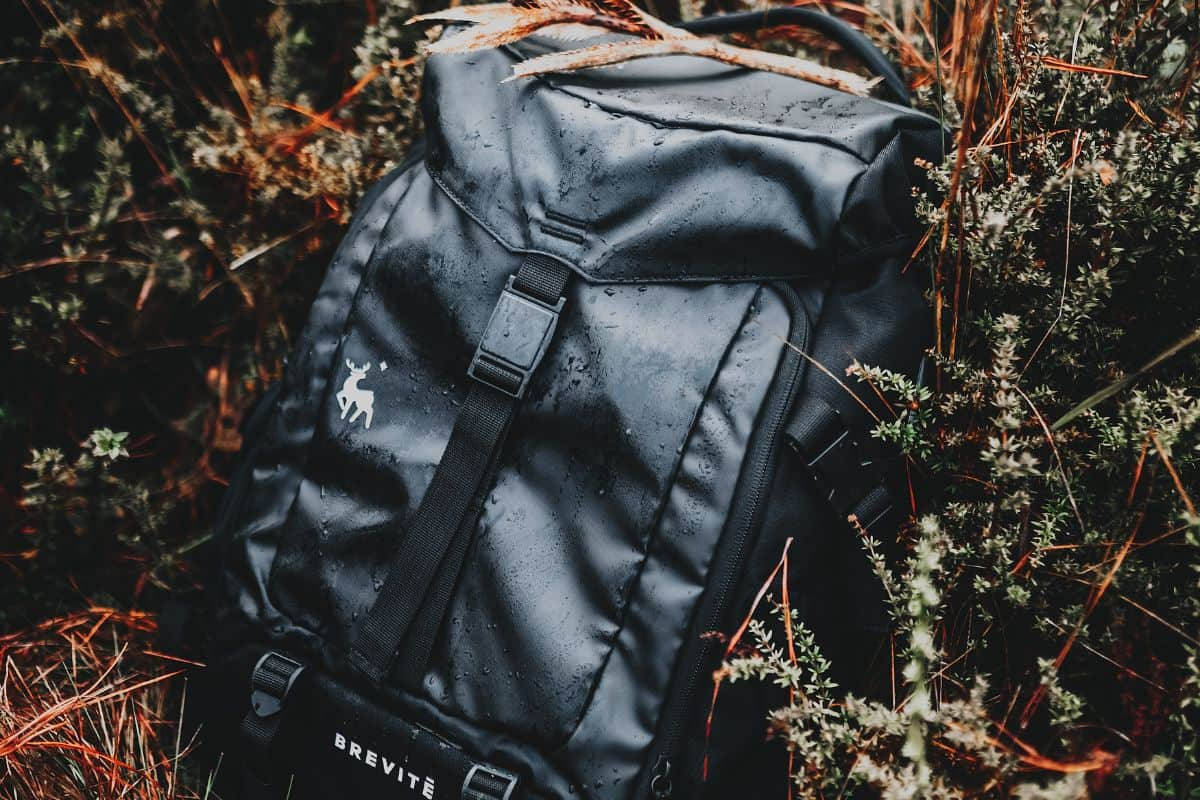
Water-resistant bags are essential because you might need certain items to remain dry while you’re out kayaking, such as a dry set of clothes, especially if you suddenly find yourself in wet conditions.
Make sure to keep your dry bags easily accessible in your kayak.
Here’s a list of some additional important gear to have on any kayaking adventure:
Extra clothing
Although the weather forecast may have predicted clear, sunny weather, it can change suddenly.
Keeping extra layers of quick-drying clothing tucked in your dry bag will ensure that you’re well prepared for any weather changes you might face.
A First Aid kit
This is critical to have in case you or anyone else gets hurt along the way.
Trail mix
Snacks are a must, since in most cases, you’ll be spending the whole day out kayaking and burning energy.
This type of snack will help you keep up your strength, especially if you’re heading to a faraway destination – just make sure you pack it in a dry bag.
Cold water
It’s imperative to always have a bottle of clean drinking water on any boating trip.
Since full bottles can be heavy and your kayak will have a certain weight capacity, a water bottle with a filter can make your life easier.
A good tip is to bring double the amount of water that you’d normally drink, as you can become dehydrated quickly (especially in hot weather, and even in mild or warm weather).
Sun protection
Water-resistant sunscreen, a cap, and secure UV sunglasses will provide the necessary protection you need from the sun.
The reflection of the sun off the water, even on a cloudy day, will not only burn your skin but even your eyes too, which can lead to headaches and long-term damage.
A pump
Depending on whether you have a sit-inside kayak or a sit-on-top kayak, you may need to bring a hand pump or bilge pump.
This will come in hand in case your boat flips, or if there’s a hole in your kayak and you need to pump water out fast.
Bilge pumps are used to get water out of sit-inside kayaks if they flood, while hand pumps are usually adequate if you need to pump the water out of a small kayak.
Duct tape
It’s helpful to bring tape that stays sticky even when wet, in case you need to make any emergency repairs during your trip.
A blanket
A blanket or sleeping bag is also a crucial piece of gear in cold conditions, especially when camping overnight, as temperatures can drop rapidly.
A pocket knife
This can come in handy if your boat flips and you become tangled in any ropes, anchor lines, or bungees, for example.
Keep your knife on your physical body so that you can cut yourself free from any obstructions, if needed.
Rope
Rope is critical because it can be used for a variety of functions, such as securing items, towing another boat, or tying yourself to something.
An anchor
This is another important piece of equipment to have in case you need to stop yourself, due to winds or strong currents, or if you need to administer first aid.
A spray skirt
If you’re using a sit-in kayak and paddling through waters that aren’t very calm, it’s a good idea to get one of these to fit around your waist and protect your kayak, your gear, and yourself from getting drenched.
Money
You never know when you might need some emergency cash, so it’s wise to keep some money in a waterproof fanny pack during your trip.
These are a few more things that are nice to have on your next trip, but they’re not essentials:
- A camera. Bringing a camera is a great way to capture all of those breathtaking moments when you’re out on the water, but just ensure that it’s in a waterproof case.
- Water sandals. Sandals or shoes with a non-slip sole and a strap are the best option for a kayak trip.
- A paddle float. This inflatable cushion is a self-rescue aid that is used to help balance your kayak when you’re getting back on after being flipped.
- A paddle leash. This piece of equipment allows you to attach your paddle to your boat so you don’t lose it.
- Paddling gloves. Gloves are nice to have in cold weather, because they will protect your hands from harsh wind and prevent blisters.
- Fishing gear. This obviously depends on whether you plan to go on a fishing adventure.
Conclusion
Kayak’s have limited space, so it can be difficult to decide which items to bring with you.
Pro tip: if you want to pack the most amount of items you can fit inside a small space – use packing cubes, as these will ensure that your stuff stays organized and fits in your boat.
Hopefully, the above-mentioned kayaking “must-haves” and “good-to-haves” will keep you well-prepared and safe on your next adventure.
Table of Contents

